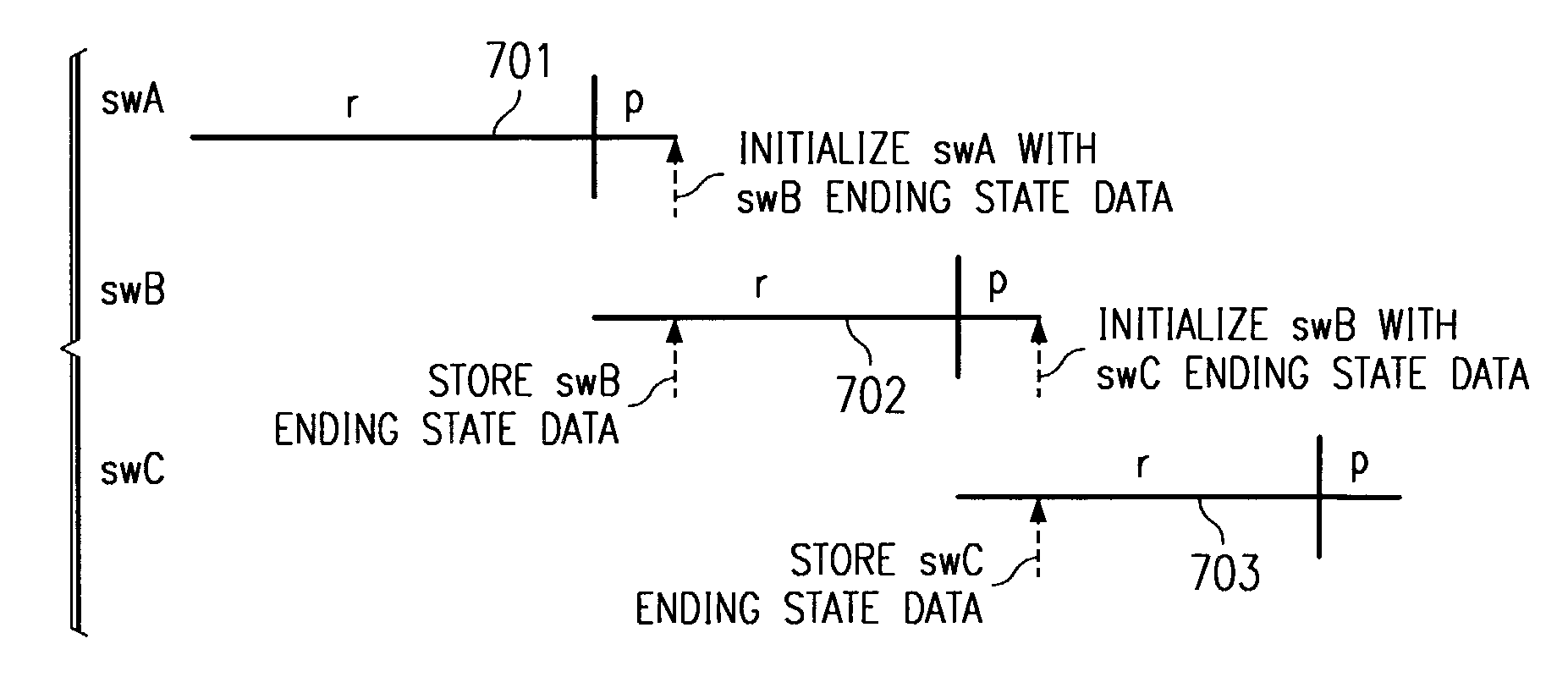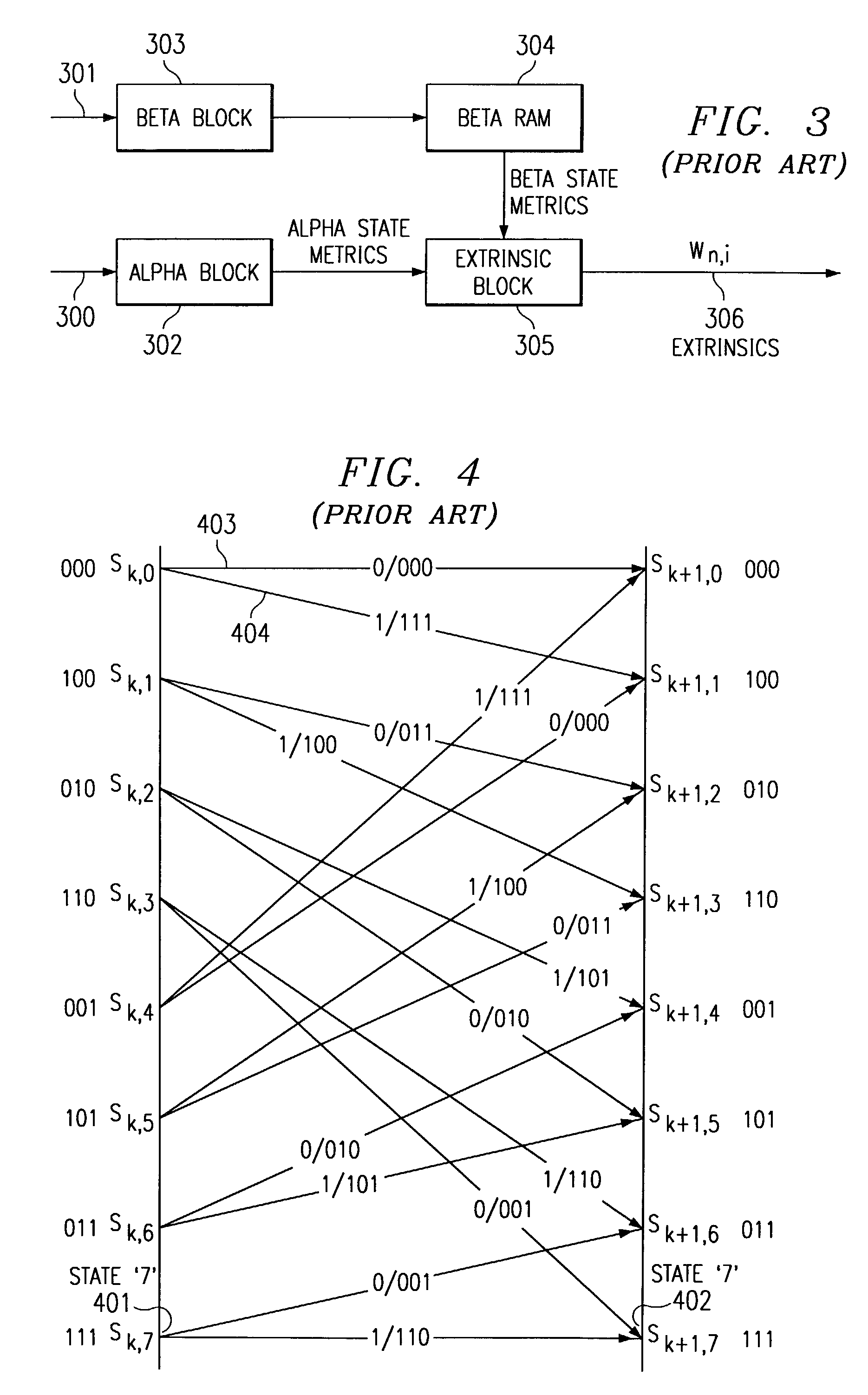Turbo decoder prolog reduction
a decoder and prolog reduction technology, applied in the field of forward error correction, can solve the problems of large memory, large performance and additional computational delay, and the decoding error performance of the decoder is close to the shannon limit, so as to improve the decoder performance, strengthen convergence, and effectual initialize successive iterative processes
- Summary
- Abstract
- Description
- Claims
- Application Information
AI Technical Summary
Benefits of technology
Problems solved by technology
Method used
Image
Examples
Embodiment Construction
[0046]This invention describes techniques that may be used to improve the performance and efficiency of turbo decoder designs. These techniques act to optimize the results of metrics calculations by: (a) adding a small amount of prolog hardware that is initialized with data from the previous iteration; and (b) dynamically scaling prolog initialization through the monitoring of extrinsic SNR. An important aspect of the invention is the careful evaluation and optimization of three additional possible approaches to decoder initialization. These are:
[0047]1. Saving best state with optimum probability and use static values for initialization;
[0048]2. Saving best state with optimum probability but use dynamic values for initialization; and
[0049]3. Saving best state with optimum probability but use difference between top two states as value for initialization.
[0050]The present invention proposes a new method that combines the prolog initialization with a small prolog section. The required ...
PUM
 Login to View More
Login to View More Abstract
Description
Claims
Application Information
 Login to View More
Login to View More - R&D
- Intellectual Property
- Life Sciences
- Materials
- Tech Scout
- Unparalleled Data Quality
- Higher Quality Content
- 60% Fewer Hallucinations
Browse by: Latest US Patents, China's latest patents, Technical Efficacy Thesaurus, Application Domain, Technology Topic, Popular Technical Reports.
© 2025 PatSnap. All rights reserved.Legal|Privacy policy|Modern Slavery Act Transparency Statement|Sitemap|About US| Contact US: help@patsnap.com



